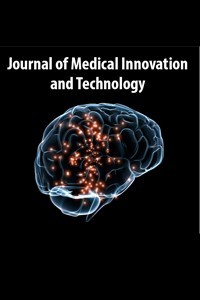Üç Boyutlu Yazıcı Destekli Üst Torakal Kırıkların (T1-6) Enstrumantasyonu
Cerrahi planlama; Kılavuz delik; Üç boyutlu yazıcı
3D Printing Assisted Upper Thoracic Vertebra (T1–6) Fractures Instrumentation
Surgical planning Pilot hole,
___
- 1. Quinlan JF, Harty JA, O'Byrne JM.The need for multidisciplinary management of patients with upper thoracic spine fractures caused by high-velocity impact: a review of 32 surgically stabilised cases. J Orthop Surg (Hong Kong). 2005;13(1):34-9.
- 2. Anthes TB, Muangman N, Bulger E, Stern EJ. Upper thoracic spine fracture dislocation in a motorcyclist.Curr Probl Diagn Radiol. 2012;41(4):128-9.
- 3. Payer M. Unstable upper and middle thoracic fractures. Preliminary experience with a posterior transpedicular correction-fixation technique. J Clin Neurosci. 2005;12(5):529-33.
- 4. Vakharia VN, Vakharia NN, Hill CS. Review of 3-Dimensional Printing on Cranial Neurosurgery Simulation Training. World Neurosurg. 2016;88:188-98.
- 5. Ploch CC, Mansi C, Jayamohan J, Kuhl E. Using 3D Printing to Create Personalized Brain Models for Neurosurgical Training and Preoperative Planning. World Neurosurg. 2016;90:668-74.
- 6. Xu W, Zhang X, Ke T, Cai H, Gao X. 3D printing-assisted preoperative plan of pedicle screw placement for middle-upper thoracic trauma: a cohort study. BMC Musculoskelet Disord. 2017;18(1):348.
- 7. Lador R, Regev G, Salame K, Khashan M, Lidar Z. Use of 3-Dimensional Printing Technology in Complex Spine Surgeries. World Neurosurg. 2019 Sep 11. pii: S1878-8750(19)32431-3. doi: 10.1016/j.wneu.2019.09.002. [Epub ahead of print]
- 8. Chen D, Chen CH, Tang L, Wang K, Li YZ, Phan K, Wu AM. Three-dimensional reconstructions in spine and screw trajectory simulation on 3D digital images: a step by step approach by using Mimics software. J Spine Surg. 2017;3(4):650-656.
- 9. Payer M. Unstable upper and middle thoracic fractures. Preliminary experience with a posterior transpedicular correction-fixation technique. Clin Neurosci. 2005;12:5529–33.
- 10. Vaccaro AR, Rizzolo SJ, Allardyce TJ, Ramsey M, Salvo J, Balderston RA. Placement of pediclescrews in the thoracic spine. Part I: Morphometric analysis of the thoracic vertebrae. J Bone JointSurg Am. 1995;77(8):1193–9.
- 11. Yu CC, Bajwa NS, Toy JO, Ahn UM, Ahn NU. Pedicle morphometry of upper thoracic vertebrae: an anatomic study of 503 cadaveric specimens. Spine. 2005;39(20):1201–9.
- 12. Vaccaro A, Rizzolo SJ, Balderston RA, Allardyce TJ, Garfin SR, Dolinskas C, An HS. Placement of pedicle screws in the thoracic spine. Part II: an anatomical andradiographic assessment. J Bone Joint Surg Am. 1995;77(8):1200–6.
- ISSN: 2667-8977
- Başlangıç: 2019
- Yayıncı: Eskişehir Osmangazi Üniversitesi
Magnetoensefalografinin Klinik Araç Olarak Kullanımı: Güncel Araştırmaların Kısa İncelemesi
Yeni Kalça Eklem Simülatöründe Biyomekanik Aşınma Testleri
R. Buğra HÜSEMOĞLU, Orkun HALAÇ, Onur HAPA, Fatih ERTEM, Ahmet KARAKAŞLI, Hasan HAVITÇIOĞLU
Üç Boyutlu Yazıcı Destekli Üst Torakal Kırıkların (T1-6) Enstrumantasyonu
Ceren KIZMAZOĞLU, Rıfat Saygın ALTINAĞ, Fazlı Oğuzhan DURAK, Ege COŞKUN, R Buğra HÜSEMOĞLU, İsmail KAYA, Hasan Emre AYDIN, Turan KANDEMİR, Orhan KALEMCİ
3B Yazıcı Destekli C1-C2 Posterior Spinal Füzyon
İnan UZUNOĞLU, R. Buğra HÜSEMOĞLU, İlker Deniz CİNGÖZ, Ceren KIZMAZOĞLU, Murat SAYIN, Nurullah YÜCEER
Ufkay KARABAY, R. Buğra HÜSEMOĞLU, Mehtap YÜKSEL EĞRİLMEZ, Hasan HAVITÇIOĞLU
Spinal Cerrahi Öncesi Üç Boyutlu Modelleme ile Simülasyon ve Cerrahiye Etkileri
İsmail KAYA, İlker Deniz CİNGÖZ, Meryem Cansu ŞAHİN, Nevin AYDIN, Hasan Emre AYDIN, Ali ARSLANTAŞ, Egemen NURSOY
Nöroşirürji Pratiğinde Portable Bilgisayarlı Tomografinin Yeri
3B Baskılı PET ve PLA Doku İskele Modellerinde MCF-7 Hücrelerinin Yüzey Adezyonlarının Araştırılması
Öykü Gönül GEYİK, Belma NALBANT, R. Buğra HÜSEMOĞLU, Zeynep YÜCE, Tarkan ÜNEK, Hasan HAVITÇIOĞLU
